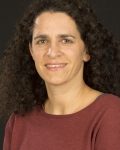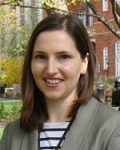Language
Research team
Our goal is to provide a model of the neural basis of language that predicts and explains speech and language difficulties and their recovery after brain damage (stroke or neurosurgery).
Currently, the clinical tool we are developing inputs a brain scan and other information about the patient and outputs how well other patients matched for lesion site and initial severity of symptoms recovered their speech and language difficulties over time. In addition to providing patients with much needed prognoses, the tool could be used by stroke researchers to provide an a priori stratification scheme for testing the efficacy of new therapies, i.e. is recovery faster than predicted when the patient has therapy? And does the effect of therapy depend on the type of therapy, its dose and when it is delivered? This would allow clinicians to select targeted (and personalised) interventions that facilitate the best possible recovery for an individual patient.
Ongoing studies
PLORAS: Predicting language outcome and recovery after stroke
This study is acquiring structural MRI (and CT) scans from thousands of stroke survivors, along with demographic details (age, gender, education, etc), hours and type of speech and language therapy received, and extensive behavioural data that focuses on their speech production, comprehension, reading and writing abilities from the first week after stroke to many years later. As of 2019, we have data from more than 1300 patients, many of whom have been tested on multiple occasions to monitor their recovery over time. The data are being analysed to identify lesion and non-lesion factors that accurately predict outcome. Confidence in the rules depends on finding consistency in lesion-outcome associations in very large cohorts of patients, and validating the findings in longitudinal studies of new patients.
ELORAS: Explaining language outcome and recovery after stroke
This study is acquiring multi-task fMRI from hundreds of individuals with and without brain damage. The data are being used to build a mechanistic model of language function that specifies (i) which brain regions are typically activated for specific language tasks, (ii) how activity is propagated between different regions, (iii) the degree of variability within and between participants and (iv) whether normal inter-subject variability provides the constraints under which recovery can occur after brain damage. The findings guide the discovery of new predictions, refine known predictions and offer new hypotheses for therapeutic interventions.
Visit our Predicting Language Outcome and Recovery After Stroke (PLORAS) site.
PLORAN: Predicting language outcome and recovery after neurosurgery
Our newest study is using, and contributing to, the results of the PLORAS and ELORAS studies by acquiring data from patients pre and post surgery for brain tumours and testing how well we can predict outcome and recovery of language skills after surgery.
Team

Sharon Geva

Andrea Gajardo Vidal

Diego Lorca Puls

Justyna Ekert

Storm Anderson

Sophie Roberts

Noor Sajid


Shamima Khan

Hayley Woodgate

Kate Ledingham



Douglas Neville

Danielle Trout

Louise Lim
- View all publications by the Language team
